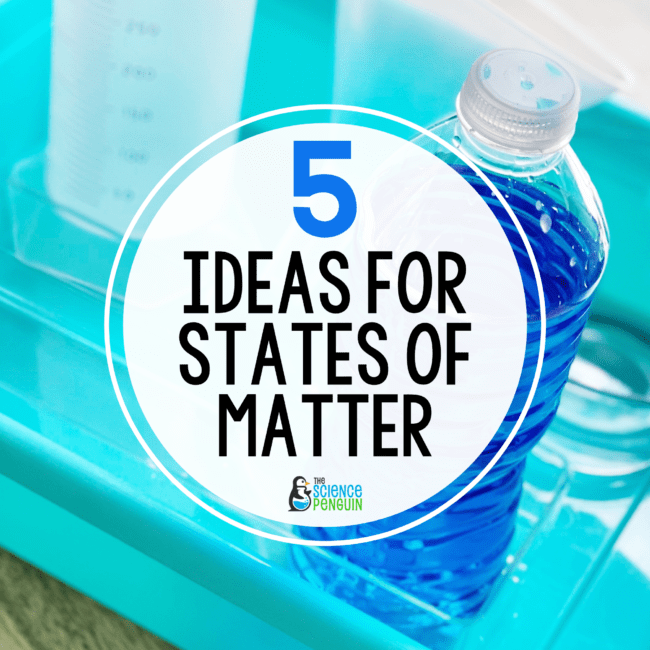
When I first started teaching about states of matter, I neglected to emphasize the role of shape and volume in classifying physical state. This is super important though for many reasons, but primarily it helps with identifying changing states and also making claims.
It’s easy to say, “A can is a solid.”
But can you back that up with evidence? “A can is a solid because it has a definite shape and volume.”
You can go even further with reasoning: “A can is a solid because it has a definite shape and volume. The particles are close together and vibrate in place without moving past each other.”
See? We took a pretty simple concept and went deeper with it to help students communicate scientifically!
Students in 2nd grade, 3rd grade, and 4th grade typically explore states of matter. Here are some hands-on ideas to help you take your science lessons to the next level.
If you teach 5th grade, go deeper into thermal energy and particles by studying hot air balloons.
Have fun teaching!
1. 🎈 States of Matter Balloons

How can we describe solids, liquids, and gases? Let’s explore with balloons!
Materials:
- Balloon filled with ice
- Balloon filled with water
- Balloon filled with air
- Bin to hold the balloons
Procedure:
- Be sure to keep the balloons over the bin while observing them.
- Observe the 3 balloons. Notice if the shape can change and how they feel.
- Chat: What do you notice about the shape of each balloon?
- Record your observations.
Try it on your own or pick up all 3 states of matter lab printables on TpT: States of Matter Labs in a Snap
2. 📓 Notebook Templates
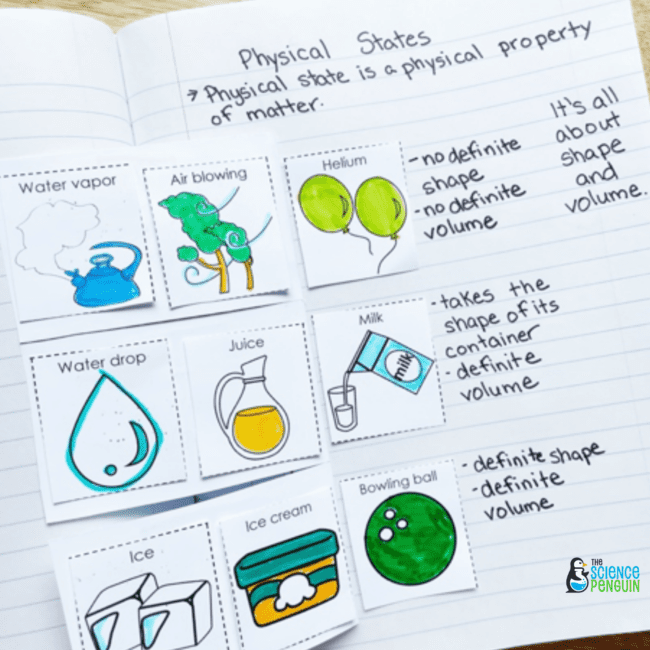
After students have had the opportunity to explore solids, liquids, and gases, they can record important information in this fold-up.
Find all 5 states of matter notebook templates on TpT: States of Matter Fold-ups
3. 💧 Water Exploration
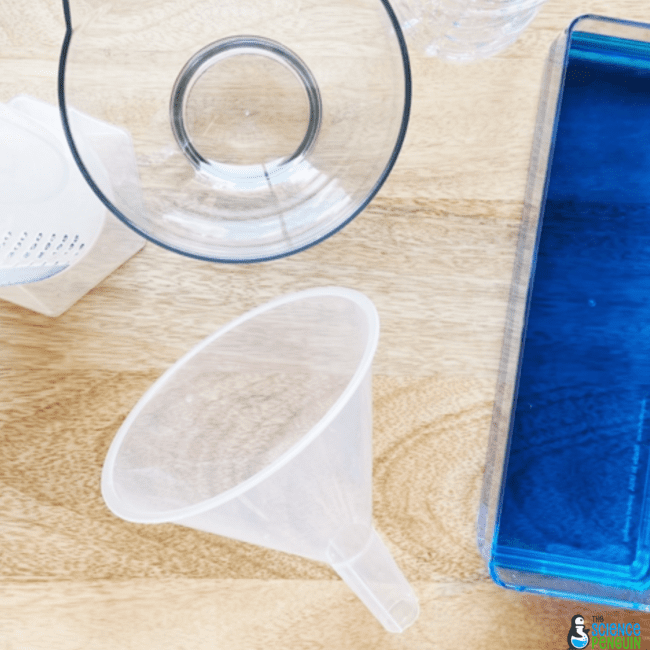
Don’t just tell students that liquids maintain the same volume but can change shape. Let’s prove it!
This is a great lesson to take outside. 😉
Materials:
- Cup of water
- Funnel
- 3 or more containers to hold water
Procedure:
- Draw a diagram of water in its first container.
- Use the funnel to transfer the water to another container. Draw a diagram.
- Repeat step 2 for each container.
- Chat: What did you notice about the shape of water?
- Chat: Did the volume of water change? How can you be sure?
Try it on your own or pick up all 3 states of matter lab printables on TpT: States of Matter Labs in a Snap
4. 🎱 Construct a Claim
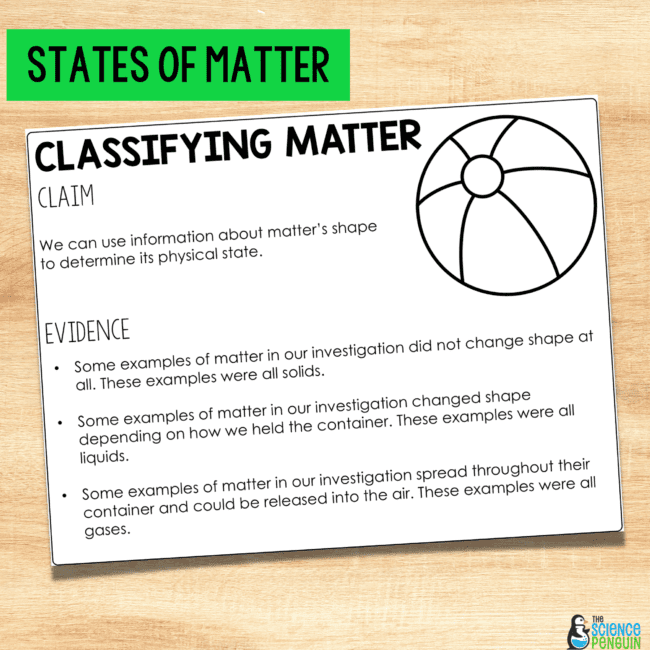
Let’s take your unit to the next level by exploring solids, liquids, and gases, then developing and supporting a claim with evidence.
Materials:
- 8-12 labeled items that are liquids, solids, and gases (Ideas: unopened juice box, liquid soap, bar soap, bottle of water, cardboard box, beach ball, baggie with sand in it, flower, baggie with baking soda)
Procedure:
Observe the matter one at a time. As a team, describe the matter’s shape. Then classify the matter as solid, liquid, or gas. Record whether the item is a solid, liquid, or gas.
Chat: Which matter is a solid? What do you notice about their shape?
Chat: Which matter is a liquid? What do you notice about their shape?
Chat: Which matter is a gas? What do you notice about their shape?
If your students are new to constructing claims with evidence (and reasoning when ready), lead them through the process.
Claim: We can use information about matter’s shape to determine its physical state.
Try it on your own or pick up all 3 states of matter lab printables on TpT: States of Matter Labs in a Snap
5. 🌌 Hot Air Balloons (5th Grade)
Older students or advanced students might be ready to go beyond classifying matter by physical state. When they’re ready to look at particles and thermal energy, this unit is amazing!
The video is the introduction to the phenomenon. The unit follows with high-quality activities.
Designed for 5th grade NGSS, this unit helps students investigate the question, support a claim with evidence, and enjoy learning about hot air balloons.
Find this unit on TpT: Hot Air Balloon Phenomena-Based Science Unit

Sign up for the Free Resource Library
This is an exclusive library of 40+ science printables, labs, activities, and games for grades 3-6. Sign up and check your email for immediate access.


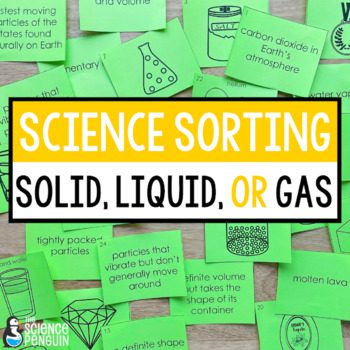
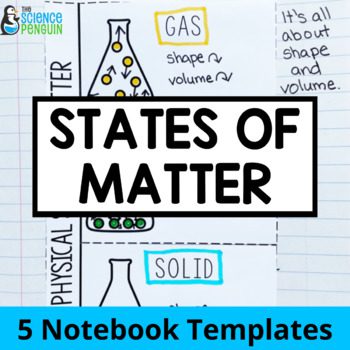

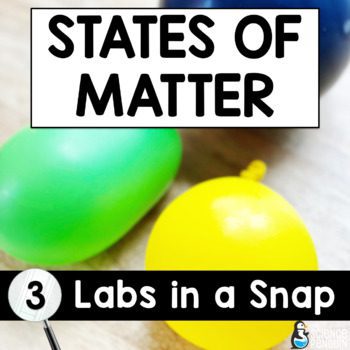
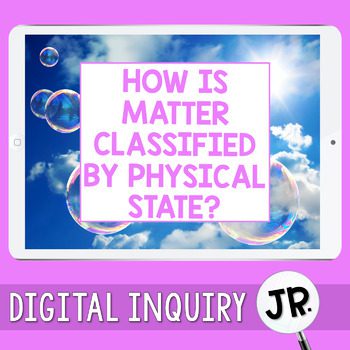

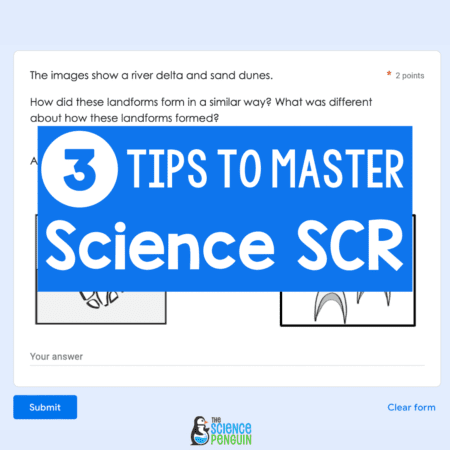


12 thoughts on “5 Ideas for Teaching States of Matter”
I am loving this blog series! I appreciate that you take the time to coordinate all your resources and have pictures for us visual learners. 🙂 I have a lot of your notebook items and centers/weekly 5, but sometimes when I’m planning it gets overwhelming and then I resort to the textbook, which is very boring. 🙁 This makes planning super easy, so thank you, thank you, thank you! -Sabrina
Gorgeous art! My middle school students would love some of these activities and notebook graphic organizers! Thanks for blogging!!!
Excellent work and thank you for sharing. I bet your students are having fun and learn a lot.
I tried the Diet Coke and Coke experiment but it did not work. They both did the same thing. Any tips?
Make sure the cans and the water are about the same temperature and that the water is high enough for the coke to be completely submerged.
I throughly enjoy reading your ideas, activities everything. I hadn’t taught Science in quite a few years as I was the Reading teacher. When our enrollment dropped on our grade level I became the Science teacher in a three way rotation. This was last year, I did not look forward to it. I was feeling so inadequate but, with great Principal support and upon discovering your site I have really enjoyed it and have learned a lot. Do you have any ideas you could give me as a regular routine in warm-ups/bell ringers as they call them for my kids in Science?
Hi Virginia! I have a blog post with some tips here:
http://thesciencepenguin.com/2016/07/5-tips-using-warm-ups.html
Thanks!
Ari
Oops forgot to mark the box.
🙂
very good magterial
Thank you!!
Thank you for blogging! I LOVE all of the items I’ve purchased on your TpT site and ALWAYS read your ideas…because they are consistently very high quality and challenge the students’ thinking. 🙂